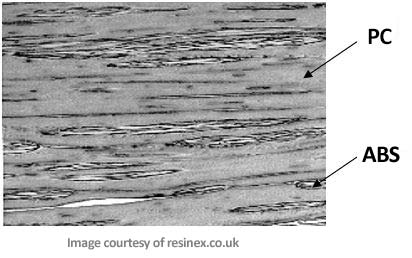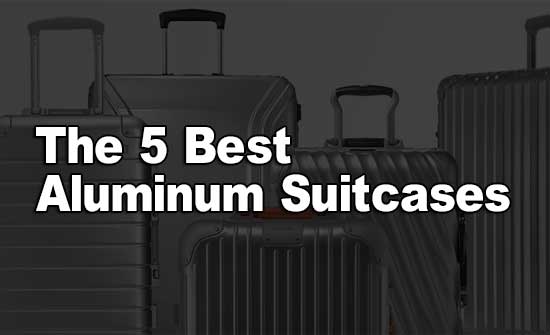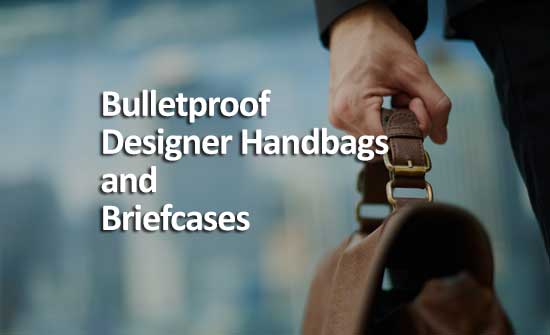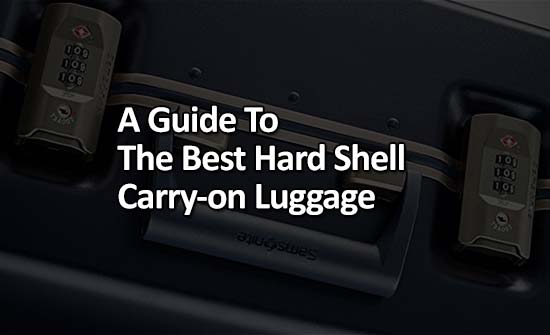
What is the difference between ABS, Polypropylene and Polycarbonate luggage?
You can tell from our domain name that we are very concerned with luggage security and nothing provides more security than a hard shelled suitcase. If you would like to learn more about the risks that your luggage endures, please visit our main page. Here you will see why it is so important to use only hard sided luggage.
What is the difference between ABS, Polypropylene and Polycarbonate luggage?
There is a great deal of confusing, misleading and out of date information on the Internet about which materials are best for use in hard shelled suitcases. We would like to officially answer the question so we can all move on...
Unfortunately, not all hard shell suitcases are made the same and you should be very aware of the differences in materials used to construct your suitcase. Don't worry, by the end of this page you will have learned all that you will need to know to make an informed decision about what shell material best meets your needs and expectations.
Until the early 1980's, most suitcases were made with hard shells and metal frames until advancements in manufacturing techniques made sewn fabric, or "soft-sided" luggage far more popular. Up until then, most hard side luggage was constructed using either pressed cardboard (paperboard) or light wood laminants known as fibreboard. In fact, if you look around today, some of the really cheap suitcases on the market are still made from these materials. These same manufacturing advancements also resulted in leaps forward in the production of hard sided luggage through innovations in polymer plastic materials. These new materials were much lighter and more durable than the traditional shell materials previously used.
What's on This Page:
1) What are the most popular materials used to make hard shell luggage?
2) Material weight comparison chart
3) Aluminum Alloy Luggage
4) Polycarbonate Luggage
5) Polypropylene Luggage
6) ABS Luggage
7) ABS/Polycarbonate Blend Luggage
8) What kind of luggage should I buy?
9) Frequently asked questions
10) Sources
What are the most popular materials used to make hard shell luggage?
The key word in this question is "hard". What ever material you choose, it had better be hard enough to withstand the forces that your luggage will encounter between the check-in counter and the baggage carousel at your destination. There are four main types of materials used to manufacture hard shell luggage: Aluminum (usually an aluminum alloy), ABS, Polycarbonate and Polypropylene. (It is becoming more common these days to create a polymer mixture of ABS and Polycarbonate together to get the benefits of each material) Although these materials look very similar, they are all very different and have remarkably varying properties that will affect the price, weight, durability and long-term wear.

It is difficult to see from only a picture but if you were to examine each one of these suitcases in real life, the differences would be immediately apparent.
Recently, some high-end manufacturers like Zero Halliburton and Swiss Carbon Gear and Ilatro have introduced new suitcases made from Carbon Fiber. These cases look really nice and are extremely strong and lightweight but are out of the price range for most travelers. Please be aware, many dodgy manufacturers are using the word "carbon" in their product names. This is not carbon fiber! They can get away with it because the advertised cases are made with polycarbonate shells which do contain carbon - we know, it's a bit of a stretch so be forewarned.
We have seen a new material being used lately. It is referred to as P.E.T. (Polyethylene terephthalate) It is the most common thermoplastic polymer of the polyester family. It is commonly used in the production of plastic soft drink bottles. It has been around since the 1940's but is now being used to manufacture inexpensive suitcases.
No matter what the material, suitcase manufacturers work hard to strike the perfect balance between strength and weight. A strong case may be very heavy while a light weight case will not be as strong. In the end, one of the two will give way to the other. Which is more important to you is a very personal choice. Do you want a light case whos weight will allow you to pack more into it or do you want a really robust case that will protect your belongings?
Do not confuse strong with rigid! Polycarbonate is considered to be stronger than polypropylene but it is not as rigid. Polycarbonate cases are quite thin feeling.
A personal note: All of the suitcases that I own are made from polypropylene and they are great. See for yourself on my what luggage do I own page. In researching this article, I actually got very confused by what I read on other web pages - and I own several of these cases! Everyone is making polycarbonate sound like it is the strongest and best material. In my experience (and I travel a lot for work), this is just not true. Polypropylene is both strong and light. When you compare the average 28" suitcase made from each material, they all weigh 10 to 11 pounds!
The chart below compares the weight of some of the top hard side suitcases side by side. They are divided into five categories by construction material: Aluminum, Polycarbonate, Polypropylene, ABS and ABS/Polycarbonate blend.
As the above table reveals, if you compare the weight of polycarbonate, polypropylene and ABS it becomes clear that there is little appreciable difference in weights between the top three materials. At the same time, aluminum does stand out as a much heavier material to use in a suitcase.
Ranked lightest to heaviest:
- ABS
- Polypropylene
- Polycarbonate
- ABS/PC polymer
- Aluminum
Aluminum Alloy Luggage
Aluminum (Al) (or spelled aluminium outside of the United States and Canada) is the most common metal in earth's crust. For many years, this material has been used widely in the aerospace and aviation industries thanks to it being light in weight, strong and abundantly available. These same properties that make it an excellent material in the production of suitcase shells.
As aluminum is a fairly soft metal, it is almost always alloyed with some other agent to improve its strength. In the case of aluminum luggage, the alloying agent is usually magnesium (Mg). These two materials are very close chemically speaking. The amount of magnesium alloy is usually only a few percent. This combination of metals results in some impressive benefits:
- Aluminum is recyclable
- Heat resistant
- Does not oxidize (rust)
- Light weight
- Strong
- Easily formed using heat or pressure
- Retains formed shapes very well
- Looks very futuristic
When an aluminum suitcase is brand new, they look very impressive and futuristic. You will be the envy of all of the other travellers.
Aluminium-magnesium alloy hard shell luggage tends to be the reserve of the top luxury luggage lines but in the past few years, several Chinese companies have entered the market with much cheaper (read inexpensive not poorly made) look-a-like aluminum hard shell suitcases.
Unfortunately, some manufacturers advertise aluminum suitcases at very low prices but, in most of these cases, only the frame is made from aluminum. So beware!
Another downside is that this material does tend to show dents and scratches quite prominently. This has lead to some airlines automatically classifying aluminum luggage as fragile to avoid damage claims! Although aluminum does not rust it will develop a slightly tarnished look if not maintained properly. Most people consider this patination to be attractive and character-adding.
Polycarbonate Luggage
A Brief History of Polycarbonate:
Polycarbonate (PC) is a thermoplastic polymer plastic that contains carbon atoms. It was first created in 1898 but was nothing was done to market it as a product. It lay virtually forgotten until 1953, when a German scientist Hermann Schnell working for Bayer patented the first linear polycarbonate. It was first marketed by the name of Merlon and later in the 1980's under the name Makrolon. Today, it is now known by the trade name "Tuffak".
Why is polycarbonate good for luggage?
Thanks to it's extremely low density, suitcases made from polycarbonate tend to be very light weight. Polycarbonate is naturally white or clear but it can be color-dyed and even transfer printed on. This makes for some very attractive luggage designs. Unfortunately, lower density polycarbonates are also known to have a poorer impact-resistance. This material is also known to scratch very easily.
Some benefits of polycarbonate luggage:
- Great heat resistance
- Will not oxidize
- Flame resistant
- Colorful finishes
- Can be printed on
- Very light
- Very strong (impact resistant)
- Can handle extreme deformation without breaking
- Low toxicity
- Izod Impact Strength, Notched @ 0.125 18 ft·lbs/in
We tend to shy away from cases made from this material because the tend to feel "flimsy" and not as strong as some other materials. On a positive note, thanks to the ease of manufacturing and the amount of material available, polycarbonate suitcases are generally very inexpensive to buy.
In recent years, luggage manufactures have caught on to fact that polycarbonate may be too flexible on its own for a suitcase shell. So they have engineered a blend of part polycarbonate and part ABS (Acrylonitrile Butadiene Styrene) plastic that results in a much stronger material without sacrificing to much added weight. You can read about this material further down on this page.
As stated earlier, this is not our favorite hard shell material but it does make for a very light and very inexpensive suitcase so if you are fine with that, go ahead and purchase a suitcase made from pure polycarbonate. They can be a lot of fun!

Polypropylene Luggage
This is our favorite hard shell suitcase material! It is tough, light, scratch resistant and non-toxic.
A Brief History of Polypropylene:
Polypropylene (PP) is a thermoplastic polymer (plastic) that is the second most produced plastic in the world behind only polyethylene. It was first created by Phillips Petroleum chemists in 1951. Polypropylene is very similar to polyethylene and shares many of the same characteristics like thermal and chemical resistance.
Why is polypropylene good for luggage?
Polypropylene has the lowest density of all commercial plastics. This makes it the lightest shell material per volume. This material is strong and flexible and does not fatigue easily. It is scratch resistant and can accommodate finishes ranging from a high polish to a rough texture.
Its inherent crystalline structure is the key to its strength. Due to a high melting point of 160 to 166 °C (320 to 331 °F) (commercial isotactic PP) is ideal for use in heat-forming suitcase shells that keep their shape even under great force.
The combination of polypropylene's strength, light weight and abundant availability makes it an ideal material for fabricating hard shell suitcases.
Some benefits of polypropylene luggage:- Good thermal resistance
- Good chemical resistance
- Very strong
- Lightest commercial plastic available
- Easy to work with
- Non toxic
- Inexpensive
- Izod Impact Strength, Notched @ 0.125 ASTM D 256 12.5 ft·lbs/in
As we stated earlier, this is our favorite material for our own personal suitcases. This material stands up very well to the rigors of what goes on behind the scenes at all airports. We can personally attest to that!
The original Samsonite Oyster was made from polypropylene and my 30 year old case is still going strong and showing no signs of deterioration!

ABS Luggage
A Brief History of ABS:
Acrylonitrile butadiene styrene (ABS) is a thermoplastic polymer that is widely used around the world. It is a blend of three different plastic materials – Acrylonitrile, Butadiene, and Styrene. Each of these three components provide unique properties to the final blended material. Like the other plastic materials, ABS is used to create suitcase shells in a process called injection molding.
The ABS plastic is heated until it is liquified. (above ) At this point it is more of a fluid than a solid. This fluid is then pumped into a two-part mold and left to cool. This process causes the plastic material to permanently take the shape of the mold.
Why is ABS good for luggage?
It is ABSs low melting temperature that makes it so useful and popular in the manufacturing world. This material can be heat-formed with much less energy than other materials. As a result, it is much less expensive than polycarbonate or polypropylene. This is the main reason that you typically see ABS used in less expensive suitcases.
ABS is best known for its use in molding many Lego brick shapes. Unlike many other thermoplastics, ABS can be reheated to return it to its original structure making it one of the only plastics that are truly recyclable.
When compared with other thermoplastic materials like polycarbonate and polypropylene, ABS does not have as good a tensile or flexural strength but it is still a solid material.
- Good thermal resistance
- Good chemical resistance
- Good impact resistance (even at low temperatures)
- Very strong
- High gloss finish
- Very light plastic available
- Easy to work with
- Very low production costs
- Recyclable
- Can be painted
- Izod Impact Strength, Notched @ 0.125 ASTM D 256 7.7 ft·lbs/in
Some negative aspects about ABS:
- Toxic if burned (so don't burn it)
- Can be damaged by sunlight
- Can be damaged by solvents
It is becoming increasingly difficult to find suitcases made from only ABS these days. They do exist but they are becoming rarer as most luggage manufacturers have moved to using ABS/Polycarbonate blended material in order to take advantage of the improved properties like strength and rigidity.

ABS/Polycarbonate Blend Luggage (ABS/PC)
 This material is relatively new in the manufacturing of hard shell luggage. It is a polymerized blend of ABS and polycarbonate that takes advantage of the best properties of each component part. This creates a material that is strong, more rigid and has a greater impact strength than either of the two original plastics.
This material is relatively new in the manufacturing of hard shell luggage. It is a polymerized blend of ABS and polycarbonate that takes advantage of the best properties of each component part. This creates a material that is strong, more rigid and has a greater impact strength than either of the two original plastics.
This blended product combines the ease of production and molding of ABS with the mechanical properties like heat and impact resistance of polycarbonate.
ABS/PC is inexpensive to formulate and is rapidly replacing ABS in the production of lower cost suitcases.
- High impact strength even at low temperatures
- Good heat resistance
- Good rigidity
- Easy to mold
- Low overall shrinkage and high dimensional accuracy
- Can be easily colored
- Can be printed on
- Broad temperature range
Some negative aspects about ABS/Polycarbonate blend:
- Somewhat toxic if burned (so don't burn it)
- Slightly heavier than PC & PP
- Can be damaged by solvents
ABS/PC blend materials seem to be gaining popularity if the sheer number of new products are any indicator. They are certainly a step forward for either raw polycarbonate and ABS so we can certainly recommend this material but we feel that it is still not a good as polypropylene.
Okay smarty pants, what kind of hard shell suitcase should I buy?
Ultimately, which luggage is right for you is a very personal decision that only you can make. We are most concerned with the security of your belongings and therefore we feel that the best material for protecting your belongings is polypropylene. This is because it is the perfect combination of light weight, impact resistance and moderate expense.
What about the other materials - why not them?- Aluminum luggage: very strong but dents easily (and very expensive)
- Polycarbonate luggage: very strong but scratches easily
- ABS luggage: strong but heavy and can crack
- ABS/PC blend luggage: strong but heavy
FAQs:
Is ABS the same as polycarbonate luggage?
No, ABS luggage is not the same as polycarbonate luggage. Both materials are thermoplastics but they both have very different properties. ABS is made by polymerizing three different types of plastic while polycarbonate is made by combining several chemicals with carbon. Polycarbonate is typically stronger than ABS but ABS is less expensive to produce.
Is ABS the same as polypropylene luggage?No, ABS luggage is not the same as polypropylene luggage. Both materials are thermoplastics but they both have very different properties. ABS is made by polymerizing three different types of plastic while polypropylene is made by a process called chain-growth polymerization. Polypropylene is stronger than ABS but ABS is less expensive to produce.
Is polycarbonate the same as polypropylene luggage?No, polycarbonate luggage is not the same as polypropylene luggage. They are both thermoplastics but they both exhibit very different properties like how they perform under heat, impact resistance and density. They are created using very different processes which give each material a unique set of properties. Polypropylene is more rigid than polycarbonate while polycarbonate a slightly stronger than polypropylene.
Does polycarbonate luggage crack?Polycarbonate plastic suitcases can crack under extreme stress but will typically not crack under normal use. Polycarbonate is prone to scratching and marking.
Does polypropylene luggage crack?Polypropylene plastic suitcases are not generally known to crack but they can crack under extreme stress but will typically not crack under normal use.
Which luggage material is the most durable?All things considered, polypropylene is the most durable material for hard shell luggage. It is strong, light and resists impacts and scratches. This material last a very long time without degrading.
Which is better ABS, polycarbonate or polypropylene luggage?In our opinion, polypropylene luggage is the best luggage on the market. It is inexpensive, light, strong, impact resistant, scratch resistant and enjoys a very long lifespan. A close second is polycarbonate. It is second because it is not as rigid as polypropylene.
Which is better aluminum or polycarbonate luggage?The answer is dependant on your budget and needs. Aluminum luggage is very attractive and strong but it is also expensive, heavy and dents very easily. If you have the budget and don't mind a few dents in your luggage then Aluminum luggage may be the best for you. Polycarbonate luggage is extremely strong and light. It is also far cheaper than Aluminum. Polycarbonate luggage is an excellent alternative to Aluminum luggage.
Which is better polycarbonate or polypropylene luggage?This is a controversial question. It seems that most of the Internet is pointing shoppers towards polycarbonate suitcases but we don't agree. We feel that polypropylene luggage is better than polycarbonate luggage. This is thanks to it's strength, rigidity, light weight and low cost.
Which is better ABS or polypropylene luggage?This is easy to answer. ABS is only used in the lowest cost hard side luggage so when comparing it to polypropylene there is no competition. Polypropylene luggage is better than ABS luggage because it is strong, light and much more resistant to impact.
How to repair cracked polycarbonate luggage.Yes you can repair a cracked polycarbonate suitcase. There are many hard sided luggage glue products on the market today. The best way to repair a polycarbonate suitcase is to buy a small amount of methylene chloride and a small sheet of polycarbonate plastic (Lexan is good). Simply apply a little methylene chloride to the inside wall of the case and then some on the Lexan sheet. Make sure that the methylene chloride is spread evenly. Apply some weight to compress the joint. It will take around 30 minutes for the bonding to cure. That's it!
Is polycarbonate luggage strong?Yes, polycarbonate luggage is very strong. Lexan is a member of the polycarbonate family and it is used in bullet proof glass and bank teller cages.
Is polycarbonate luggage durable?Yes, polycarbonate luggage is durable but it is prone to scratching. These can often be buffed-out or polished out.
Is polycarbonate luggage scratch resistant?Unfortunately, polycarbonate luggage is not very scratch resistant. Scrapes and scratches can often be buffed-out or polished out.
Are hard or soft sided suitcases better?This is a very personal decision but in our opinion is that hard sided luggage is far better than soft sided suitcase. We have written an article that explores the differences between hard sided and soft sided luggage to back up our opinion.
Sources:
As an Amazon Associate I earn from qualifying purchases.
Copyright © 2014 - 2024 SafeSuitcases.com - All rights reserved










































